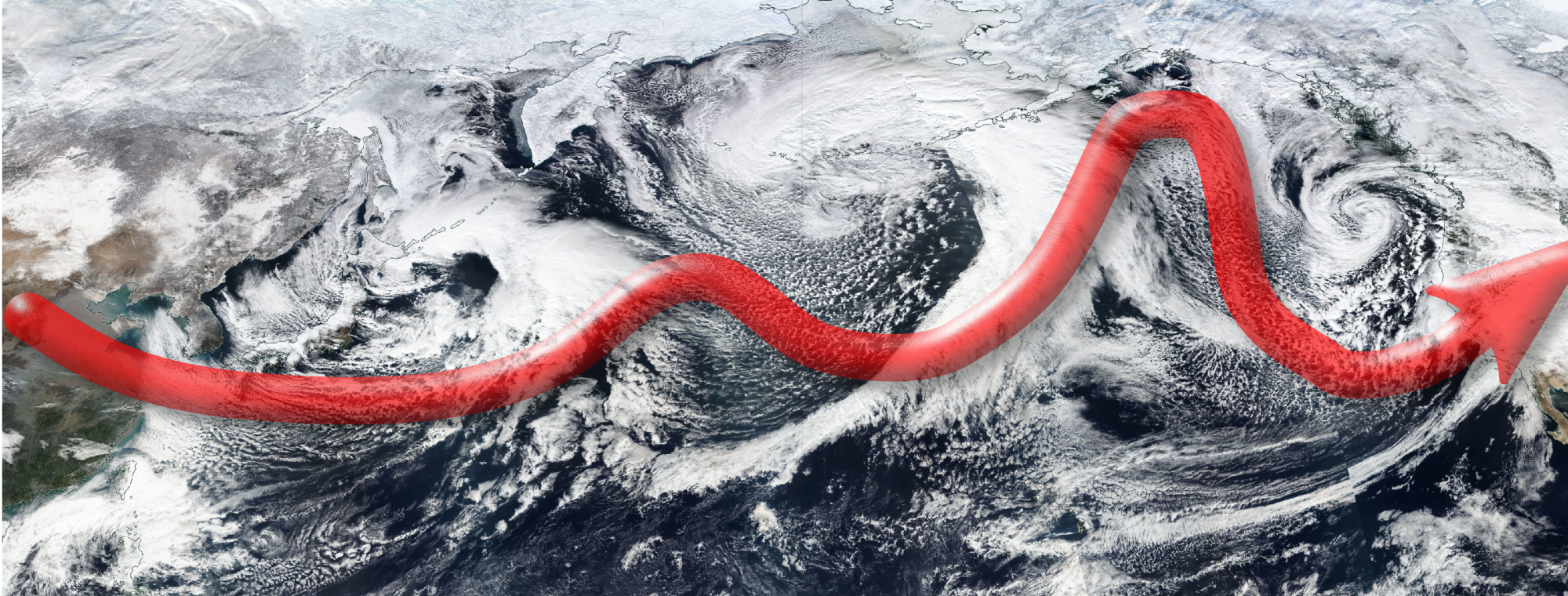Jun 25 2021
The global weather system’s behaviors and features were considered to be influenced by migratory storms and local weather systems called cyclones and anticyclones.
 Westerly jet stream. The northern westerly jet stream, indicated by the thick red arrow, is especially important in regulating the winter weather in the Northern Hemisphere. Image Credit: NASA.
Westerly jet stream. The northern westerly jet stream, indicated by the thick red arrow, is especially important in regulating the winter weather in the Northern Hemisphere. Image Credit: NASA.
The ability to explore cyclones and anticyclones, on the other hand, was restricted. Researchers presented for the first time a unique three-dimensional analytical tool that can measure the impact of individual cyclones and anticyclones on broader weather systems.
Longer-term circulation and climate studies, such as how storm features may evolve in the future, would benefit from this research.
For many people, the word cyclone brings up ideas of violent storm winds or the tornadoes that are key to the Wizard of Oz plot. Cyclones and anticyclones, on the other hand, represent a broader category of large-scale weather events that, as it turns out, are critical to the functioning of the global climate.
Cyclones are essentially wind systems whirling around a low-pressure area. These revolve clockwise south of the equator and counterclockwise north of the equator, indicating rainy or stormy weather.
Anticyclones, on the other hand, are weather systems that rotate around areas of high pressure and signal calmer, brighter weather. In both hemispheres, these revolve in the opposite direction as cyclones.
For decades now, atmospheric scientists have used a technique known as the Eulerian approach (named after 18th-century mathematician Leonhard Euler) to analyze long-term three-dimensional atmospheric data.
Satoru Okajima, Project Research Associate, Research Center for Advanced Science and Technology (RCAST), University of Tokyo
“However, the approach considers cyclones and anticyclones to be merely deviations from a background average and not separate entities in their own right. Furthermore, anticyclones are often unconsciously disregarded, unlike cyclones, possibly because of their association with calmer weather,” added Okajima.
Okajima, RCAST Professor Hisashi Nakamura, and the Weizmann Institute of Science Professor Yohai Kaspi used an innovative technique to separate data from winds rotating around an area of low or high air pressure from ever-present background winds like the westerly jet stream, the fast-flowing air currents between 30° and 60° latitude in both hemispheres.
The team was able to assess the impact of local curvature, or the shape of cyclones and anticyclones, on the westerly jet stream using this method. This is in contrast to one of the former traditional ways to view these patterns, known as relative vorticity, that was unable to display such fine features.
It was extremely challenging to quantitatively separate the cyclones from the anticyclones, and many attempts along the way fell flat. But our successful method can now be applied to various climate-model simulations and will hopefully help researchers better project the future of our warming climate.
Satoru Okajima, Project Research Associate, Research Center for Advanced Science and Technology (RCAST), University of Tokyo
“Climate science is important to all of us as it affects so many things. But it is also particularly interesting as it combines so many subfields like oceanography, hydrology, computer science, physics, chemistry and mathematics. I hope our contribution can be a useful tool to climate scientists for making predictions about our ever-changing world,” concluded Okajima.
Journal Reference:
Okajima, S., et al. (2021) Cyclonic and anticyclonic contributions to atmospheric energetics. Scientific Reports. doi.org/10.1038/s41598-021-92548-7.